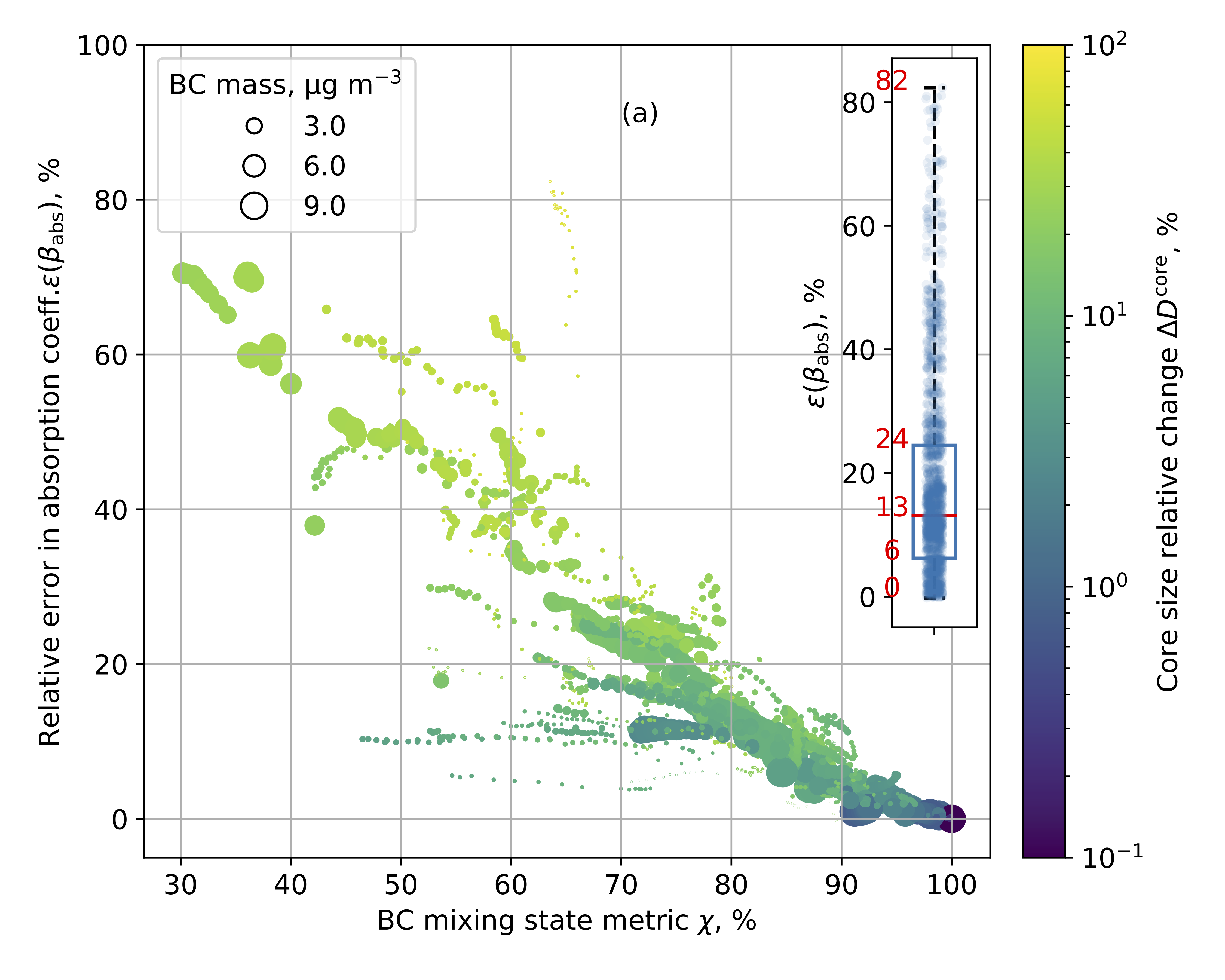Effects of mixing state on aerosol optical properties
Submitter
Riemer, Nicole — University of Illinois Urbana-Champaign
Area of research
Aerosol Properties
Journal Reference
Science
Calculations of the aerosol direct effect on climate rely on simulated aerosol fields. The model representation of aerosol mixing state potentially introduces large uncertainties into these calculations, since the simulated aerosol optical properties are sensitive to mixing state. In this study, we systematically quantified the impact of aerosol mixing state on aerosol optical properties using an ensemble of 1800 aerosol populations from particle-resolved simulations as a basis for Mie calculations for optical properties.
Impact
Investigating the impacts of aerosol mixing state on aerosol optical properties has a long history from both the modeling and the experimental perspectives. Our paper approaches this topic by using particle-resolved simulations as a benchmark for determining the error in optical properties when using simplified aerosol representations that are common in state-of-the-art aerosol models.
With detailed process-level analysis, we disentangle the causes for biases in the prediction of optical properties that are introduced by assuming that particles are internally mixed within prescribed size bins. We show that errors in single-scattering albedo due to the internal mixture assumptions are of a magnitude that warrants caution in calculating the direct radiative aerosol forcing.
Summary
In this study, the errors introduced by internal mixture assumptions used in sectional aerosol models were systematically quantified. The internal mixture assumption generally led to an overestimation of the volume absorption coefficients and an underestimation of the volume scattering coefficients. The relative errors for ϵ(βabs) and ϵ(βscat) reached up to 70% and −32%, respectively. The absorption overestimation and scattering underestimation resulted in a consistent underestimation of SSA, with errors up to −22.3% and median errors of −0.9%. The relative error in the volume absorption coefficient ϵ(βabs) displayed a similar pattern for RH of 50% and 90% compared to the dry environment. The relative error in the volume scattering coefficient ϵ(βscat) decreased for higher relative humid environment because of the enhanced scattering cross-section through hygroscopic growth.


